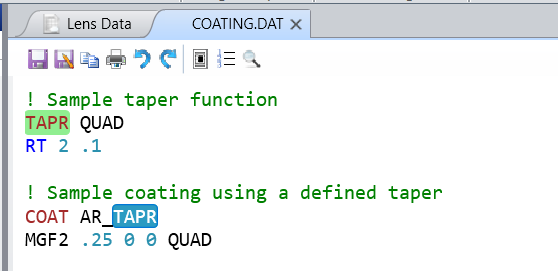I would like to model a continuously variable (Nnutral Density) ND filter. The attenuation function could be linear, Gaussian or sinusoidal. Is there any idea how to make such optical model?
Thanks!
I would like to model a continuously variable (Nnutral Density) ND filter. The attenuation function could be linear, Gaussian or sinusoidal. Is there any idea how to make such optical model?
Thanks!
Best answer by Sandrine Auriol
Hi Khaled
There are several options:

You can find an example in the default coating file:

Let us know if you need further help on any of these options.
Enter your E-mail address. We'll send you an e-mail with instructions to reset your password.